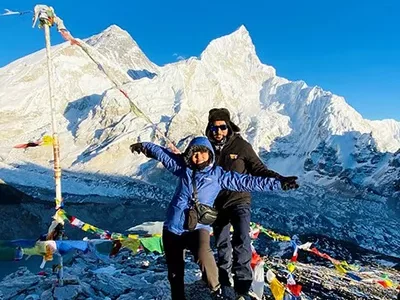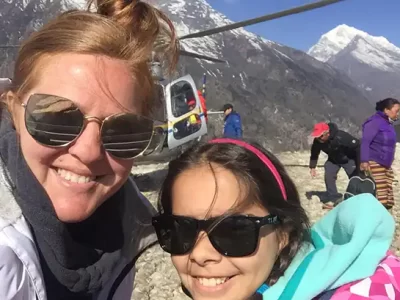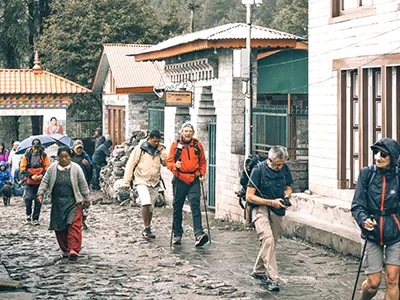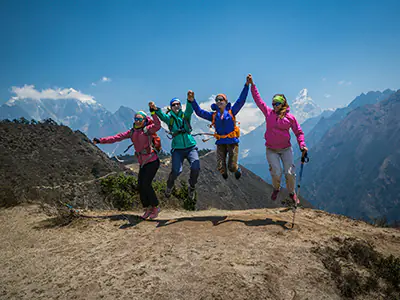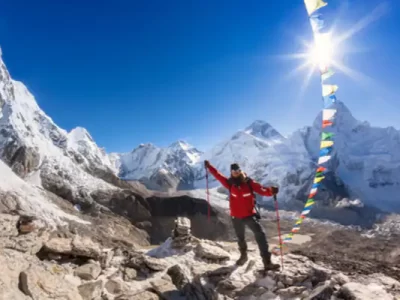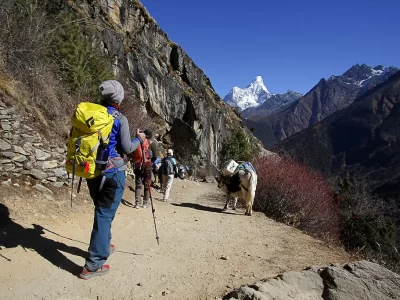The Everest Base Camp trek is a dream come true for many people who love trekking all over the world. This trek will test your body with its beautiful views and difficult paths while also giving you an opportunity to learn the way of life in the Khumbu region. Armed with the right Everest Base Camp Trekking Tips, you can secure a memorable and secure adventure as you navigate some of the most iconic landscapes on the planet.
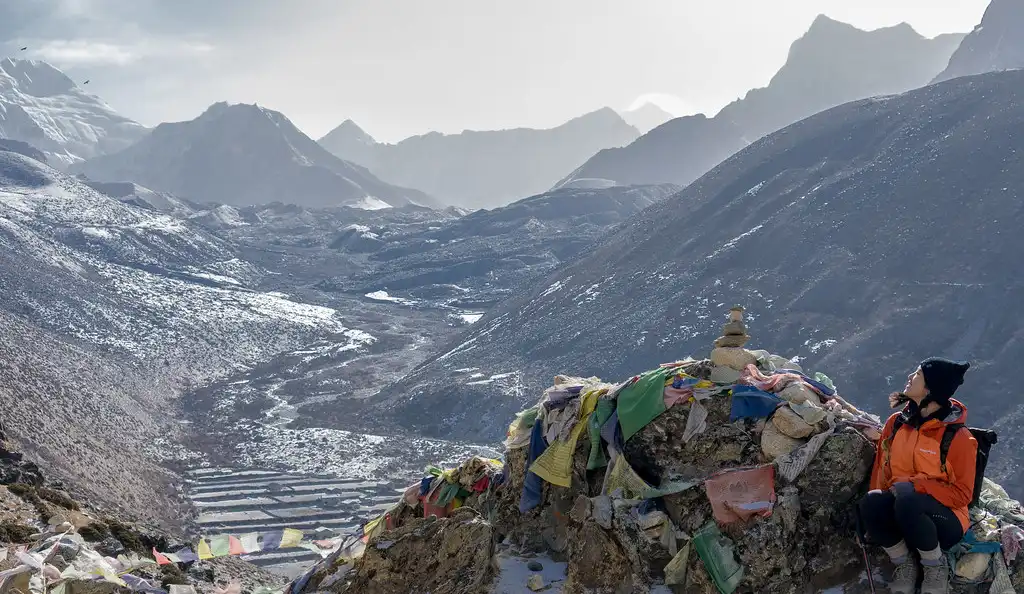
Preparing for a successful trek to Everest Base Camp is very important. Using EBC trekking tips and Everest base camping tips can greatly enhance your trekking experience. Choosing the right gear and the best time to visit are important components of your Everest base camp trekking guide. These guides help you craft your itinerary, set realistic expectations, and prepare for the rigors of high-altitude hikes.
Concentrating on EBC Everest base camp trekking tips and general trekking tips delivers essential insights for managing altitude sickness, ensuring adequate hydration, and keeping your energy up throughout the trek. It’s also advantageous to acquaint yourself with an Everest base camp guide that details critical elements like route maps, lodging options, and local etiquette. This thorough approach to preparation guarantees not only a safe trek to the base camp but also enriches your entire trekking experience.
We have compiled 30 top tips to help you trek Everest Base Camp. These tips will save you time and money, make your trip more comfortable, and ensure you get the most out of this once-in-a-lifetime adventure!
Everest Base Camp Trek
Everest Base Camp Trek with Helicopter Return
Luxury Everest Base Camp Trek
1. Choose the Right Season
Selecting the right season greatly enhances your Everest Base Camp trek experience. The pre-monsoon (March to May) and post-monsoon (September to November) periods offer the best conditions. These months typically provide stable and clear weather, ensuring spectacular views of the Himalayas, which are crucial for a memorable trek.
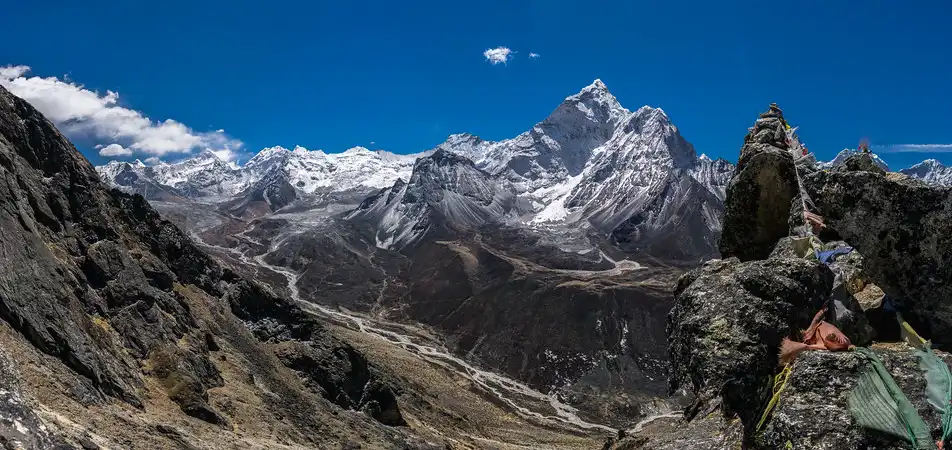
In the pre-monsoon spring season, you will find trails lined with blooming rhododendrons and wildflowers, making it the best season for an EBC trek if you enjoy the vibrant natural scenery. The temperatures remain comfortably cool, and the clear skies afford unobstructed views of Mount Everest and nearby peaks, enriching your trekking trip.
The post-monsoon autumn also stands out as the best season for the EBC trek due to its dry weather and clear skies. Although it is slightly cooler, this season offers some of the clearest panoramic views of the Himalayan range. With fewer clouds, you have better photography opportunities, and the trails remain less muddy, ensuring a safer and more enjoyable hike.
2. Physical Preparation
Achieving physical fitness is crucial for tackling the Everest Base Camp (EBC) trek, as the challenges of high-altitude hiking demand great endurance, strength, and resilience. Properly preparing yourself not only boosts your enjoyment of the trek but also reduces the risks associated with altitude sickness and physical strain.
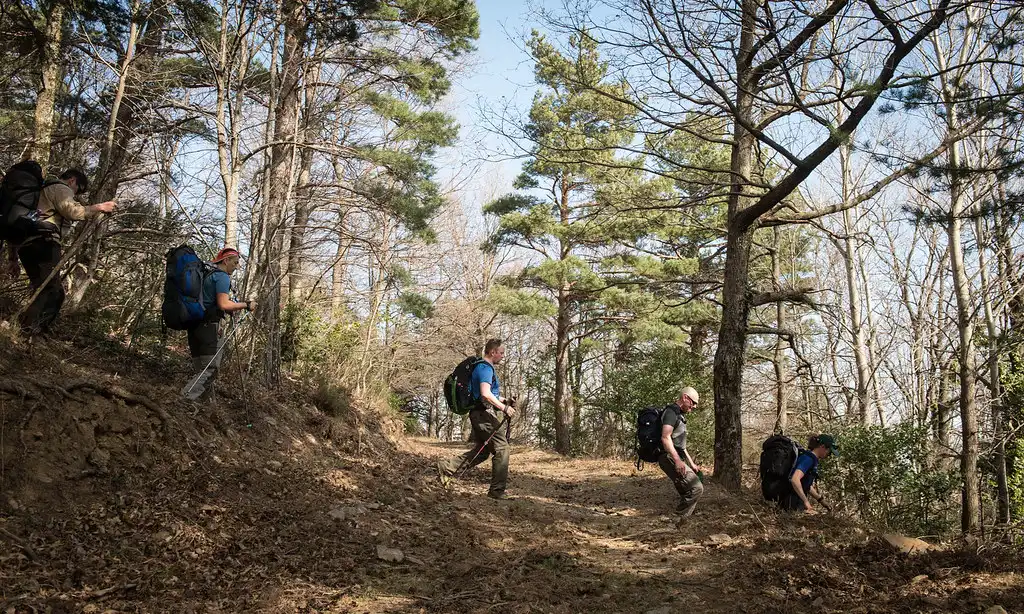
Engaging in a personalized fitness program ranks high among vital EBC trek tips to ensure you’re ready for what lies ahead. To prepare effectively, you should integrate hiking, cardiovascular exercises, and strength training into your routine several months before you set out.
Trekking acclimates your body to prolonged walking, while cardiovascular activities like running or cycling enhance your stamina. Strength training that targets your legs, core, and back is essential because these body parts are critical during trekking. Adhering to this fitness plan will equip you with the strength and confidence needed to navigate the trek safely and successfully.
3. Acclimatization
A gradual ascent is crucial for avoiding altitude sickness on the Everest Base Camp trek. Ascending too quickly can cause significant health complications, making it vital to climb slowly and allow your body ample time to adapt to decreasing oxygen levels. One vital Everest base camp tip is to ensure your itinerary includes days specifically planned for acclimatization.
During these acclimatization days, engage in short hikes to higher altitudes, then return to lower elevations to sleep. This method effectively helps your body adjust to the altitude changes and significantly lowers the risk of developing altitude sickness. Additionally, it’s critical to drink plenty of water, steer clear of alcohol, and maintain a nutritious diet to aid your body’s acclimatization process during these crucial days.
4. Packing Essentials
Packing wisely for the Everest Base Camp trek is essential for both comfort and safety. Clothing is key to adapting to the varied environmental conditions encountered from the lower valleys up to higher altitudes. A moisture-wicking base layer, a heat-retaining insulating layer, and a waterproof outer layer are crucial. This layering method forms a vital part of Everest Base Camp Trekking Tips, ensuring you are well-prepared for any weather conditions.
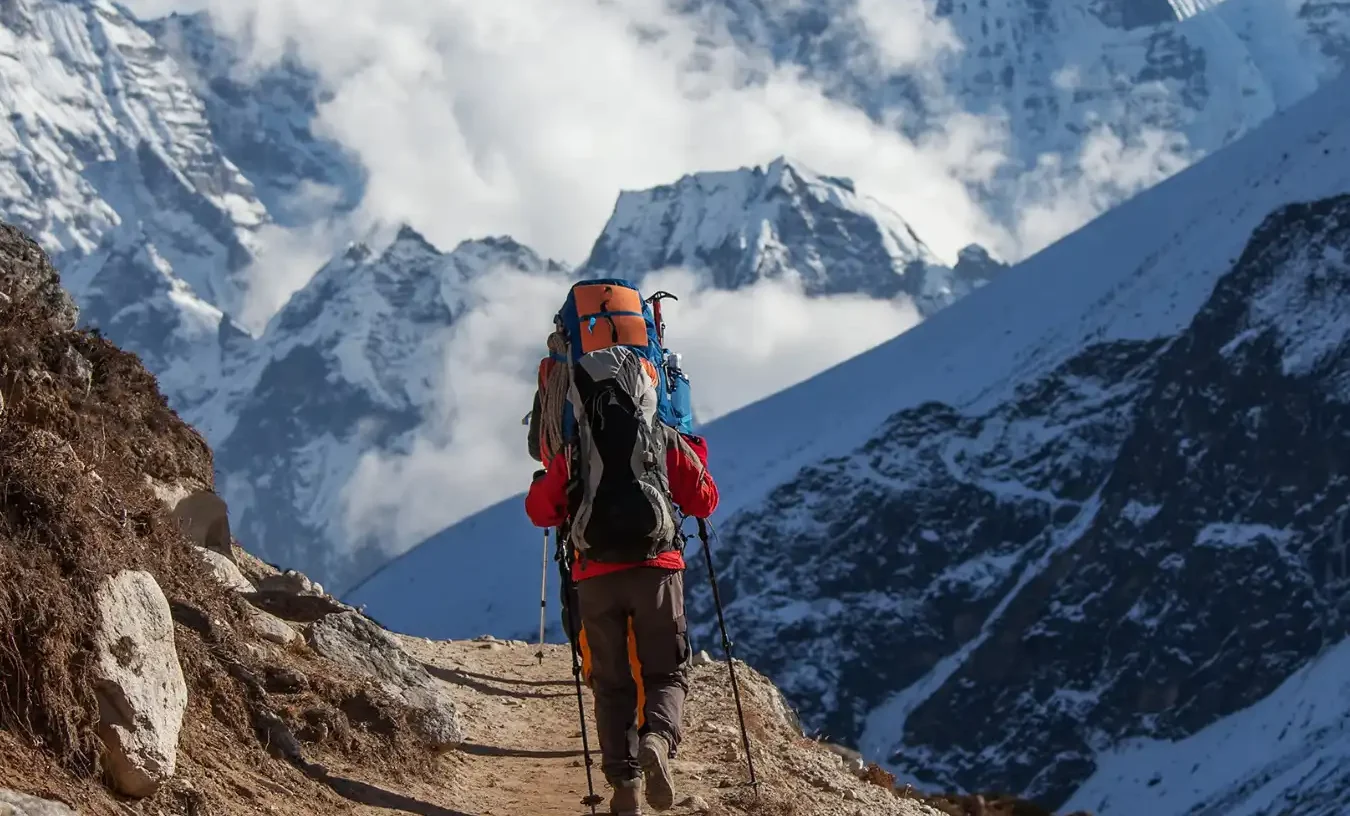
Essential items for your expedition should include durable boots, trekking poles, and an effective water purification system. Durable boots provide necessary support and handle the rugged terrain effectively, while trekking poles lessen the strain on your knees during descents and enhance your stability. A water purification system is indispensable, securing your access to safe drinking water that is vital for maintaining health throughout the trek. These are key EBC trek tips that substantially enhance your trekking experience.
Referring to an Everest base camp guide or Everest base camp trekking guide offers further insight into additional essential items tailored to the specific challenges of this trek. Such guides often detail necessary gear and explain the importance of each, enhancing your readiness. Following these trekking tips not only boosts your preparedness but also ensures a safer and more enjoyable trekking adventure.
5. Stay Hydrated
Maintaining hydration is crucial during your Everest Base Camp trek, as dehydration can significantly worsen altitude sickness and impair your physical capabilities. Please make sure you drink enough water throughout your trek, regardless of thirst cues, to keep hydration levels optimal. Emphasizing hydration forms a pivotal part of EBC Everest base camp trekking tips; it aids altitude adjustment and promotes overall wellness.
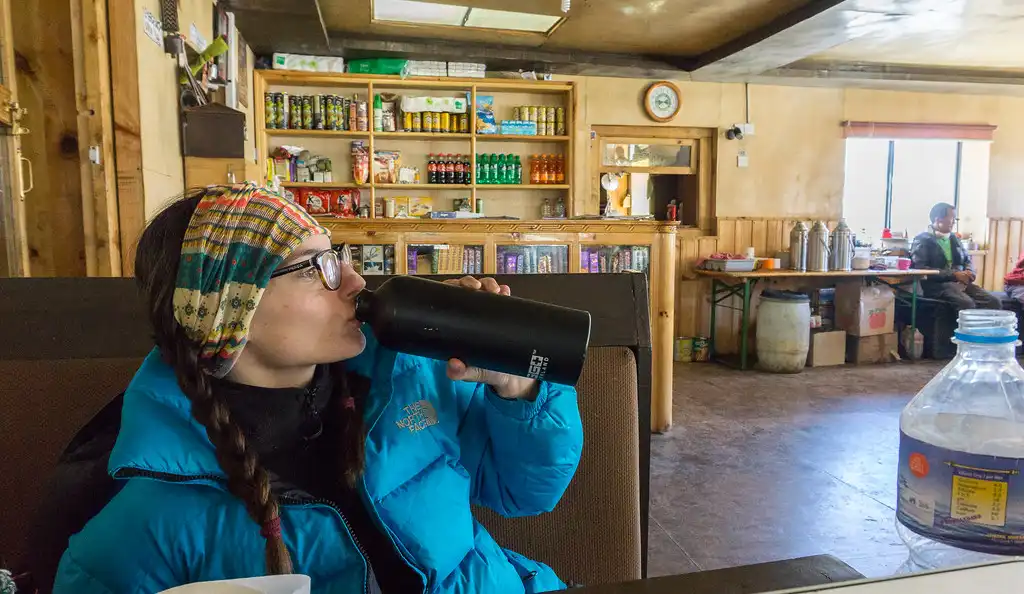
To ensure safe drinking water, utilize reliable purification methods like iodine tablets, UV water purifiers, or portable filtration systems. Hydration packs are also highly recommended for convenient water access while trekking. These allow for continuous hydration without the need to stop for water breaks, keeping you hydrated smoothly as you ascend. Effective management of your hydration, through both intake and purification, is essential for a successful and healthy experience at Everest Base Camp.
6. High-Altitude Sickness
High-altitude sickness poses a significant risk during the Everest Base Camp trek, making it vital to recognize its symptoms early. These symptoms, including headaches, nausea, dizziness, and fatigue, can worsen quickly without appropriate intervention. Gradually acclimatizing, staying hydrated, and avoiding excessive exertion are crucial preventative strategies.
These practices are vital Everest base camp tips for ensuring your body adapts properly to higher altitudes. Regarding the management of high-altitude sickness, it is advisable to carry suitable medications. Acetazolamide, for instance, can both prevent and treat the onset of symptoms, though you should only use it following a doctor’s guidance.
It is also important to incorporate adequate rest days into your trekking schedule to allow your body time to recuperate and adjust to the altitude. These Everest base camp tips not only aid in symptom management but also contribute to a safer and more enjoyable trekking experience.
7. Travel Insurance
Obtaining comprehensive travel insurance is essential for trekking to Everest Base Camp, as it protects you from unexpected events and emergencies. Could you make sure your plan covers high-altitude travel and provides for evacuation and medical emergencies?
Having the right coverage is an important travel tip that gives you peace of mind and allows you to focus on enjoying the trip without worrying about the financial impact of the potential for unexpected information. When you select your travel insurance, please make sure that it covers activities at the altitudes you will reach during your trek. This detail is crucial because many standard policies do not extend coverage to high-altitude activities.
It is also wise to include helicopter evacuation coverage, as the cost of being evacuated from remote areas can be extremely high. These trekking trips emphasize the necessity of careful preparation and stress the importance of thoroughly examining your insurance details to ensure full protection on your trip.
Everest Base Camp Trek for Beginners
Jiri to Everest Base Camp Trek
Everest Base Camp Short Trek
8. Guided vs. Independent Trekking
Deciding between guided and independent trekking for the Everest Base Camp trek requires evaluating the advantages and disadvantages of each approach. A guided trek offers the benefits of an experienced guide and logistical support, as well as included meals and accommodations, enhancing both your safety and overall trekking experience.
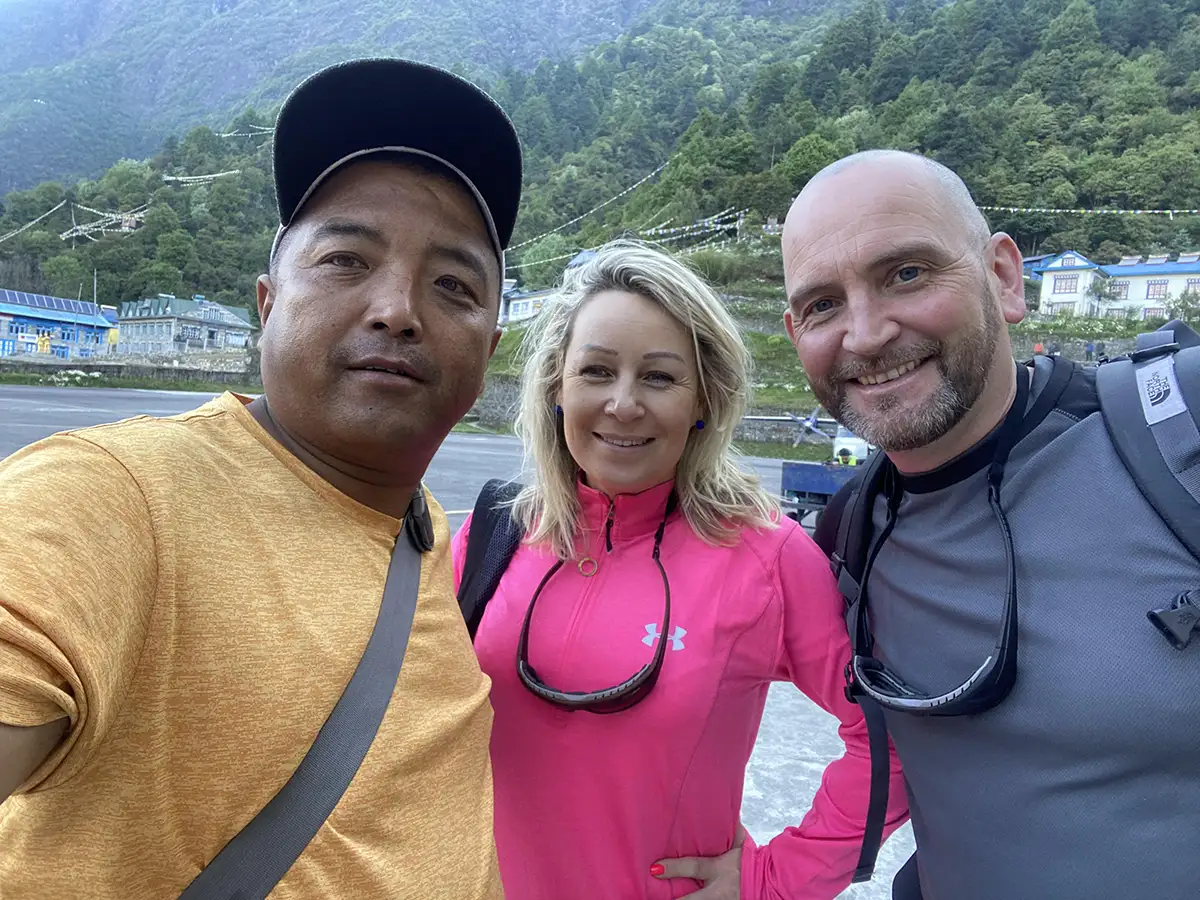
In contrast, independent trekking allows for more personal freedom and may cost less, but it demands thorough planning and carries higher risks, particularly for those less acquainted with the area. A crucial EBC trek tip is to thoughtfully choose the option that aligns with your trekking preferences and experience level. If you decide on a guided trek, choosing a trustworthy agency is key.
Peregrine Treks and Tours stands out as a reputable provider renowned for its dependable services and knowledgeable guides. Please make sure the agency you select is licensed and boasts positive feedback from past trekkers. These considerations are essential for a safe and pleasant trekking trip. Additionally, verifying the agency’s transparency regarding costs and services can prevent any surprises and ensure a smoother experience on your trek.
9. Nutrition and Diet
To meet the increased nutritional requirements of high-altitude trekking while Everest base camping, it is important to follow a balanced diet. A diet rich in carbohydrates, protein, and fat provides the sustained energy needed to meet the physical challenges of travel.
In addition, eating smaller and more frequent meals can help her adjust to the altitude better. Following this routine is an important Everest base camping tip to keep your energy up and maintain overall health during the trip.
While trekking, incorporating easy-to-digest, energy-rich foods is advisable. Start your day with oatmeal, and snack on dried fruits, nuts, and energy bars. For main meals, choosing local dishes such as dal bhat, a traditional Nepali meal of rice and lentils, is beneficial.
Dal bhat offers a nutritious blend of carbohydrates and protein and is typically prepared fresh. Following these nutritional Everest base camp tips ensures your body remains energized and equipped to face the daily demands of the trek.
10. Essential Documents
Anyone aiming to trek to Everest Base Camp must obtain the necessary permits. You’ll require both a TIMS (Trekkers’ Information Management System) card and a Sagarmatha National Park entry permit. These permits are crucial for compliance with legal and environmental standards, allowing access to designated trekking areas and supporting the park’s maintenance and conservation efforts.
Remembering to secure these permits is a vital trekking tip to make sure your trek is both enjoyable and adhering to local regulations. To carry and protect these important documents effectively, you should store them in a waterproof pouch or holder. This measure is essential, as you will face various weather conditions, potentially including rain or snow.
Keeping electronic copies stored securely online or on a personal device acts as a backup should the original documents become lost or damaged. Also, keeping your documents within easy reach is a good idea, as you will often need to present them at various checkpoints throughout your trek.
This trekking tip helps to streamline the process, reducing delays and complications and ensuring a smoother trek. Safeguarding and efficiently managing your essential documents will undoubtedly enhance your experience, allowing you to focus fully on the adventure that lies ahead.
11. Local Culture and Etiquette
When visiting Everest Base Camp, respect local customs and traditions. The area, predominantly inhabited by Sherpas, is known for its rich cultural heritage and warm hospitality. By greeting with “Namaste” and removing your shoes before entering homes or temples, you show respect and increase the locals’ appreciation for each other.
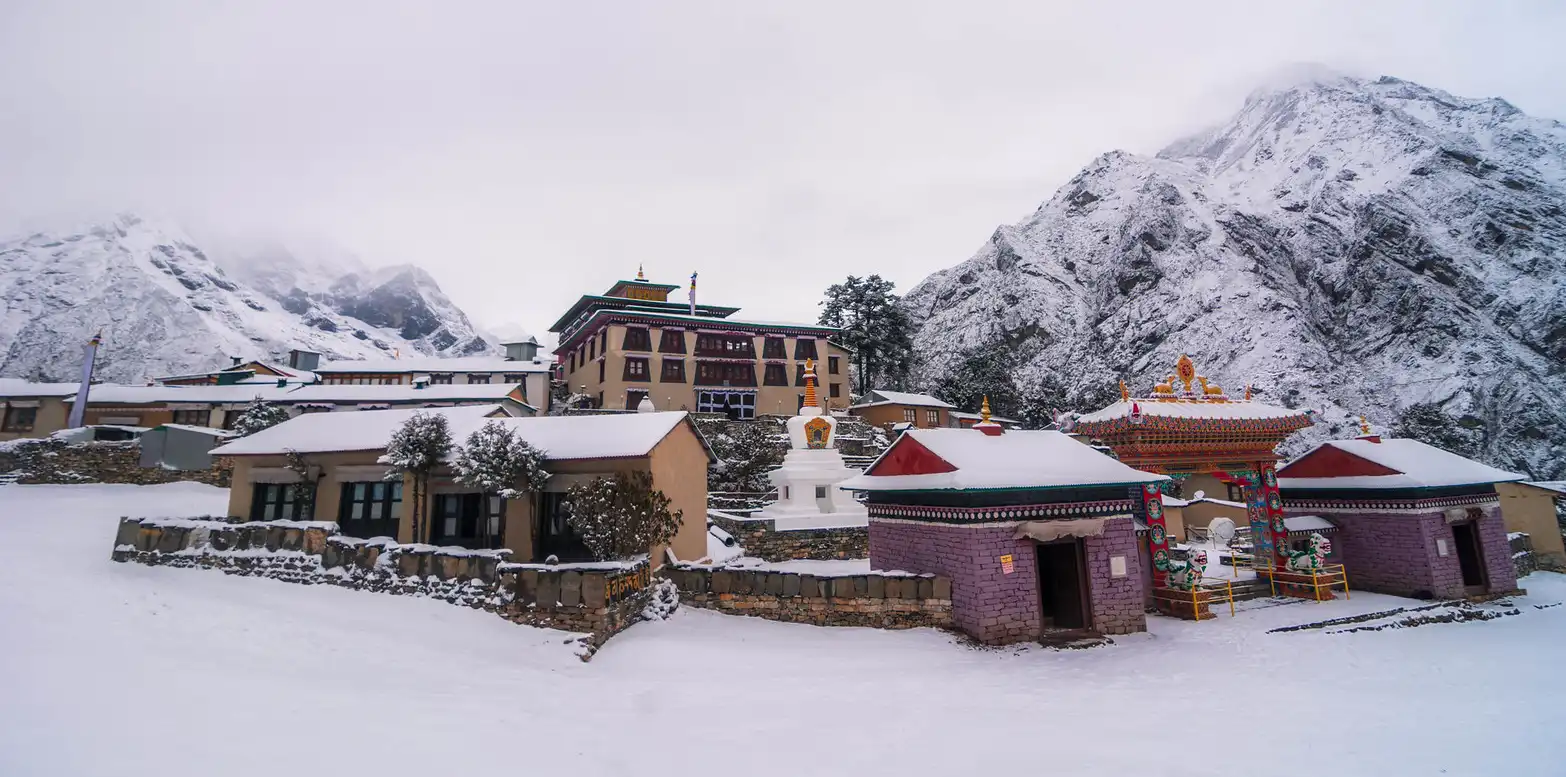
Such practices are necessary for EBC Everest Base Camp trekking advice to promote cooperation in trekking in this community. Engage with the community in a kind and thoughtful manner. It’s polite to ask permission before you take pictures and engage in friendly conversation where appropriate.
A simple smile or warm greeting can greatly strengthen your relationship with the locals. While guided by respect and openness, these interactions are not just about following EBC Everest Base Camp travel advice; Your trip is enriched with meaningful cultural insights and gives you a deeper understanding of the local way of life.
12. Managing Trekking Costs
Budgeting effectively is essential for managing the expenses associated with your Everest Base Camp trek. It’s crucial to list all potential costs, such as permits, gear, food, accommodations, and transportation, ahead of time. This proactive financial planning helps you allocate your resources wisely and prevents unexpected expenses.
Researching and comparing prices for different services and items is a vital EBC trek tip that ensures you secure the best deals and manage your budget efficiently. To further reduce expenses, consider trekking during the shoulder seasons when the tourist numbers drop and prices tend to be lower.
Joining a group trek can also cut costs substantially by splitting expenses for guides, porters, and transport with other trekkers. Buying or renting your trekking equipment in Kathmandu is another cost-effective strategy, often cheaper than acquiring gear in your home country. These strategies are crucial EBC trek tips for keeping your trek both affordable and enjoyable.
13. Choosing the Right Gear
Selecting high-quality gear is essential for a successful Everest Base Camp trek. Good quality gear significantly improves your comfort, safety, and overall experience on the trek. Key pieces of equipment should include sturdy hiking boots, a dependable sleeping bag, and appropriate layers for varying weather conditions.
Adhering to Everest base camp tips for choosing gear that can withstand the rigors of high-altitude conditions is crucial for a smooth trek. When shopping for reliable trekking equipment, choose trusted brands like The North Face, Marmot, and Black Diamond, which are known for their durability and performance in outdoor settings.
In Kathmandu, shops such as Shona’s Alpine and Everest Hardwear provide a comprehensive selection of high-quality gear at reasonable prices. Carefully selecting your equipment and following these Everest base camp tips will prepare you well for the trek’s demands, letting you concentrate on the adventure itself.
14. Trail Navigation
Successfully navigating the trail to Everest Base Camp demands careful planning and essential tools. Always bring a detailed map of the area and consider supplementing it with a GPS device for better trail following. These tools prove indispensable for maintaining your course, particularly in less distinct trail sections.
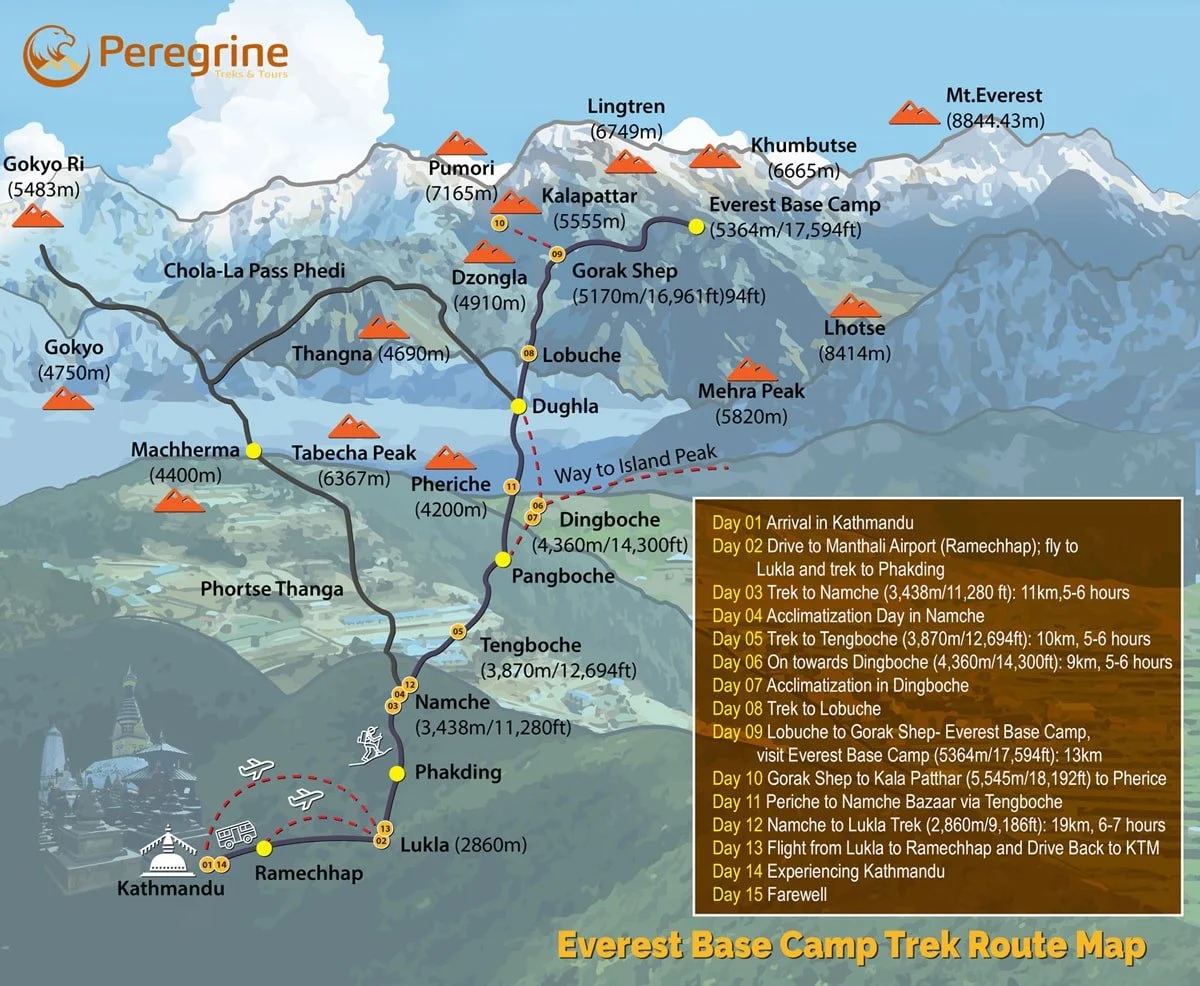
Regular updates from local guides or fellow trekkers about the current trail conditions are vital and can greatly improve your navigation abilities; these are valuable trekking tips you should pay attention to. In addition to traditional maps and GPS devices, installing navigation apps on your smartphone can provide excellent real-time guidance.
Make sure to keep your devices fully charged, and carry portable power banks to ensure they remain functional throughout your trek. Getting acquainted with these navigation tools before you begin your trek is a smart trekking tip. Such preparation allows you to navigate confidently and enjoy a smooth trekking experience.
15. Health and Hygiene
Keeping up with health and hygiene is essential on the Everest Base Camp trek, especially as facilities are sparse in remote areas. Make it a habit to wash your hands regularly and use hand sanitizer to fend off germs and infections. It’s also crucial to brush your teeth using purified water and maintain basic cleanliness, even when regular showers are not an option.
These practices are key EBC Everest base camp trekking tips that safeguard your health along the trail. For hygiene products, opt for biodegradable soap, toothpaste, hand sanitizer, and wet wipes. These products are eco-friendly and practical for maintaining cleanliness when you have limited access to water.
Also, it’s essential to pack a small travel towel and toilet paper. Following these hygiene practices is a crucial EBC Everest base camp trekking tip to prevent illness and enhance your overall comfort during the trek.
16. Safety Precautions
Prioritizing safety is crucial during the Everest Base Camp trek. Adhering to basic safety measures is essential: stick to well-marked trails, use trekking poles to maintain stability, and avoid trekking alone, especially under adverse weather conditions.
Remaining vigilant and cautious helps prevent potential accidents and injuries, especially in the more hazardous segments of the trail. I think it is also wise to keep a communication device within reach for emergencies and to update someone about your trekking route and progress regularly.
These Everest base camp tips are vital for ensuring your safety and enhancing your capability to navigate unexpected challenges, contributing to a more secure and enjoyable trekking experience.
17. Emergency Contacts
Maintaining a list of key emergency contacts is vital when trekking to Everest Base Camp. Make sure to have the contact details for your guide, local authorities, and emergency services readily accessible. It’s important to store these numbers in both your phone and on a piece of paper as a backup in case your electronic devices run out of power.
This preparation is a crucial trekking tip to ensure you can swiftly access assistance in any emergency. Effectively storing emergency information means going beyond merely saving contacts in your phone. You can use waterproof containers or bags to protect your written contact details from the elements.
Also, please keep a family member or friend informed about your travel itinerary and check in with them regularly. These measures are invaluable trekking tips that bolster your safety, ensuring you have reliable means of communication and assistance during urgent scenarios on your trek.
18. Environmental Responsibility
Reducing environmental impact is essential while trekking to Everest Base Camp. The untouched natural beauty of the Himalayas demands careful trekking practices to maintain its splendor and rich biodiversity. Practices such as removing all your trash, opting for biodegradable products, and shunning single-use plastics are crucial.
These efforts embody important EBC trek tips for eco-conscious trekking, ensuring the trails and surrounding areas stay pristine for future trekkers. Embracing responsible trekking practices further includes respecting local wildlife by keeping a safe distance, adhering to established trails to minimize erosion, and choosing eco-friendly fuels for cooking when camping.
Committing to these behaviors supports sustainable tourism and aids in safeguarding the delicate ecosystem of the Everest region. Every small step matters, and implementing these EBC trek tips greatly enhances the positive impact on the environment you are enjoying.
19. Communication Devices
Maintaining communication during the Everest Base Camp trek is vital for safety and coordination. Use satellite phones for reliable connectivity in remote areas and local SIM cards for decent coverage in more populated regions. These Everest base camp tips ensure you can reach out for help or stay in touch with your group throughout the trek.
Effectively managing battery life for your communication devices is crucial due to limited power sources along the trail. Carry portable power banks and switch your devices to power-saving mode to extend battery life. Turn off non-essential apps and services to conserve energy. Following these Everest base camp tips will help keep your devices functional when you need them most, enhancing your safety and communication during the trek.
20. Photography Tips
To capture stunning views on the Everest Base Camp trek, you need to know the best photography spots. Key locations include Namche Bazaar for panoramic views, Tengboche Monastery with its picturesque Everest backdrop, and Kala Patthar for breathtaking sunrise and sunset shots of the Himalayas. These trekking tips guide you to the ideal spots, ensuring you capture the incredible landscapes and memorable moments of your trip.
Protecting your camera equipment is crucial due to the harsh conditions. Use waterproof and dustproof covers to safeguard your gear from the elements, and always have extra batteries and memory cards stored securely. Keep your camera in a padded, weather-resistant bag to prevent damage from bumps and sudden weather changes.
21. Mental Preparation
Completing the Everest Base Camp trek relies heavily on mental preparation. You can overcome the physical and emotional challenges of the trail by maintaining a positive mindset. Stay motivated and focused by setting small, achievable goals each day and keeping the breathtaking destination in mind.
Enhance your mental resilience by practicing mindfulness and visualization techniques. Surround yourself with supportive trekking companions who can offer encouragement during difficult times. These EBC Everest base camp trekking tips highlight the crucial role of mental strength in making your trek both rewarding and fulfilling.
22. Staying Warm
Keeping warm while trekking to Everest Base Camp requires proper layering and high-quality sleeping bags. Start with an absorbent base at the bottom, add insulation, and top with a waterproof outer layer for protection from wind and rain. Use a compressed floor to keep warm on cold nights.
These Everest-based camping tips help you navigate through different temperatures and weather conditions smoothly. It is equally important to keep it dry to keep it warm. Wet Clothing can rapidly lower your body temperature and increase your risk of hypothermia. Always carry waterproof gear, including jackets, pants, and backpack covers. Please make sure to change into wet clothes as soon as possible to keep dry and warm.
23. Trekking Poles Usage
Trekking poles provide numerous benefits on the Everest Base Camp trek, such as enhancing stability, reducing knee strain, and boosting endurance. Adjust your trekking poles to match your height, ensuring your elbows form a 90-degree angle when holding them.
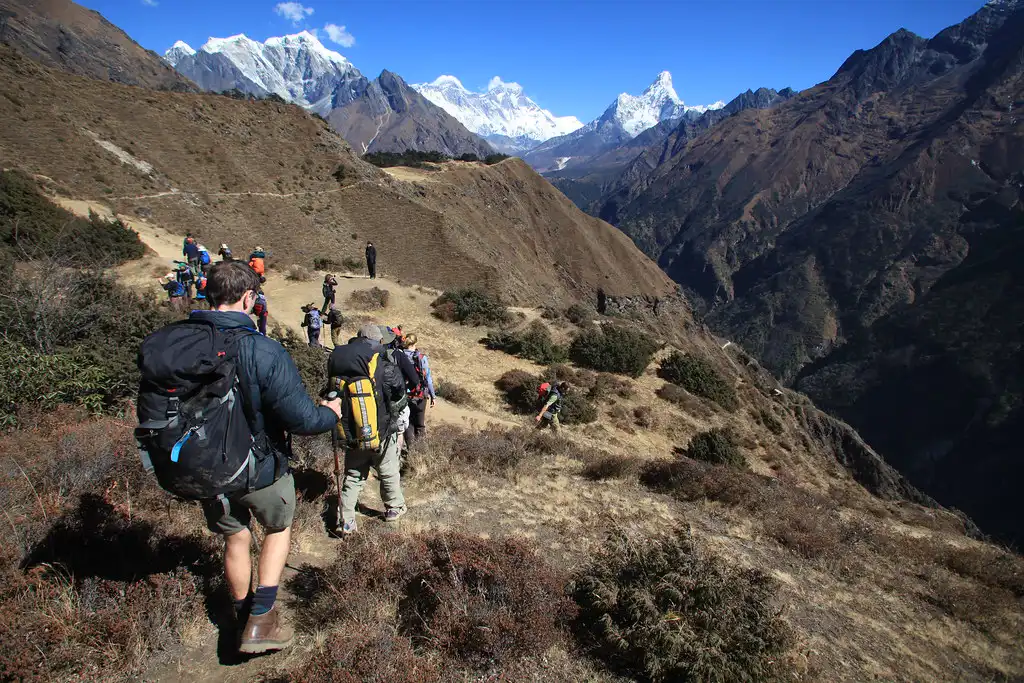
Utilize wrist straps to distribute some weight to your arms and maintain a smooth, rhythmic motion. Following these trekking tips will help you use trekking poles effectively, improving your comfort and efficiency on the trail.
24. Managing Blisters
Managing blisters is essential for a comfortable Everest Base Camp trek. To prevent blisters, wear well-fitted, broken-in hiking boots and moisture-wicking socks. Apply blister prevention tape or moleskin to common friction areas. Keep your feet dry and take regular breaks to air them out. These EBC trek tips help you avoid blisters and maintain foot health.
If you develop blisters, treat them immediately to avoid further discomfort. Clean the area with an antiseptic wipe and cover the blister with a sterile blister pad or moleskin. Use blister gel or ointment to reduce friction and protect the skin. Following these EBC trek tips ensures effective blister management, keeping your feet healthy and your trek enjoyable.
25. Staying Energized
Maintaining your energy levels during the Everest Base Camp trek is vital for stamina and overall well-being. Snacks and energy bars offer quick and convenient energy boosts between meals. Pack a variety of nutrient-dense snacks like nuts, dried fruits, and energy bars to keep your energy stable throughout the day. These Everest base camp tips will help you avoid fatigue and maintain a consistent pace.
To stay energized, eat small, frequent meals and snacks instead of relying on large meals. Hydrate regularly, as dehydration can sap your energy and hinder performance. Following these Everest base camp tips ensures you remain fueled and energized, making your trek more enjoyable and manageable.
26. Local Food and Water
Safely eating local cuisine is a key part of the Everest Base Camp trek experience. Eat well-cooked foods and avoid raw or undercooked items to prevent foodborne illnesses. Choose popular and busy teahouses when trying local dishes, as they are more likely to uphold good hygiene standards.
Ensuring water safety is equally important; drink only purified or bottled water and avoid tap water. Carry water purification tablets or a portable filter to guarantee access to safe drinking water throughout your trek. These trekking tips will help you enjoy local flavors while maintaining your health and hydration on the trek.
27. Accommodation Options
On your way to Everest Base Camp, you will come across a series of tea houses and hotels. These accommodations range from basic to luxurious, providing bedding, food, and sometimes hot showers. Tea houses are popular with pedestrians for their convenience and the opportunity to interact with locals and fellow travelers.
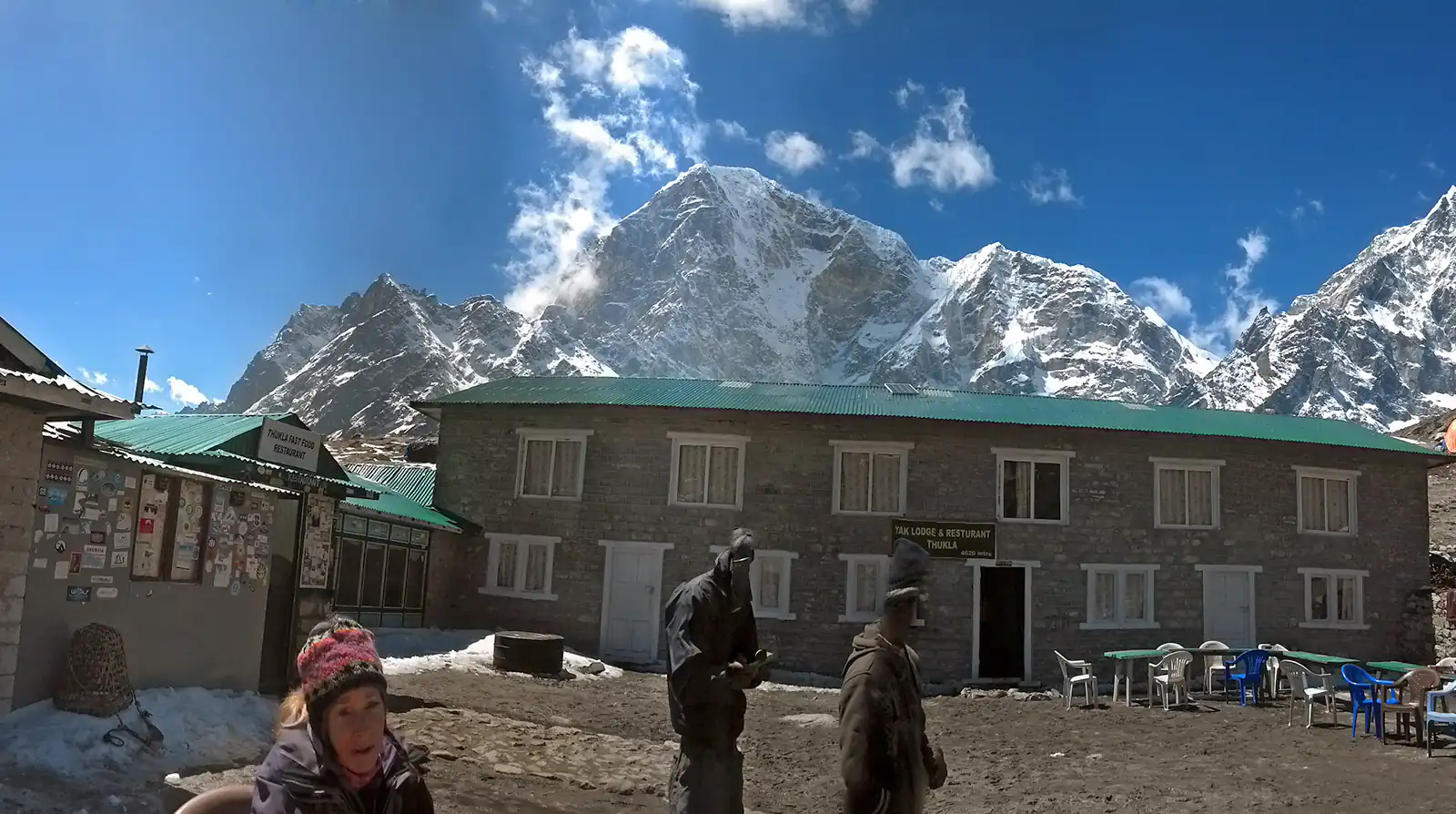
Book early to get the best routes, especially during peak foot traffic times. Choose places with good information and basic amenities like clean beds and reliable food. By following these EBC Everest base camp travel tips, you can find the most convenient and comfortable accommodation for your trip.
28. Trekking Etiquette
Good trekking etiquette is essential for a pleasant experience on the Everest Base Camp trail. Always give way to ascending trekkers, as their climb is more strenuous, and stay on designated paths to avoid environmental damage.
Share the trail respectfully by keeping noise levels low, not littering, and avoiding blocking the path, particularly in narrow sections. Greet fellow trekkers and locals with a friendly “Namaste” and respect local customs and traditions. These Everest base camp tips emphasize the importance of being considerate and respectful, ensuring a positive experience for everyone on the trail.
29. Preparing for the Descent
A safe descent from Everest Base Camp is as crucial as the climb. Descending too quickly can cause injuries or worsen altitude-related problems. To manage your pace, take shorter steps and use trekking poles for better stability.
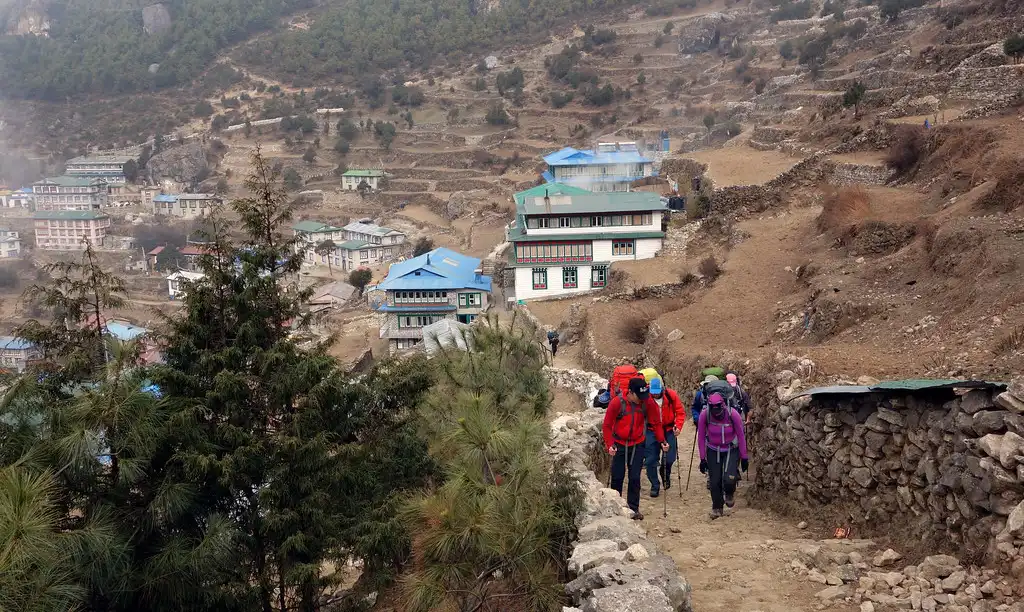
Regularly rest and stay hydrated to keep your energy levels up. These trekking tips will help you navigate the Descent safely and prevent unnecessary strain on your body.
30. Post-Trek Recovery
After the Everest Base Camp trek, focus on rest and nutrition to help your body recover. Take a few days off from strenuous activities to allow your muscles to heal. Prioritize sleep and relaxation to restore your energy levels. Pay attention to your diet; eat foods rich in proteins, vitamins, and minerals to support muscle repair and overall recovery.
Gentle stretches or light yoga can also help reduce muscle stiffness. Following these EBC Everest base camp trekking tips will ensure a swift and effective recovery, preparing you for your next adventure.
Conclusion
To achieve a successful trek to Everest Base Camp, prioritize thorough preparation in all aspects of your adventure. Focus on choosing the right gear, maintaining your health, navigating the trail safely, and respecting local customs and the environment.
These Everest Base Camp Trekking Tips guide you in overcoming challenges and making the most of your time in one of the world’s most iconic trekking destinations.
It would be best if you approached your trek with careful preparation and a respectful attitude. Following these Everest Base Camp Trekking Tips will enhance your enjoyment and ensure your safety and sustainability on the trail. Let these tips inspire and guide you on this remarkable trek, ensuring your Everest Base Camp experience is unforgettable and rewarding.

